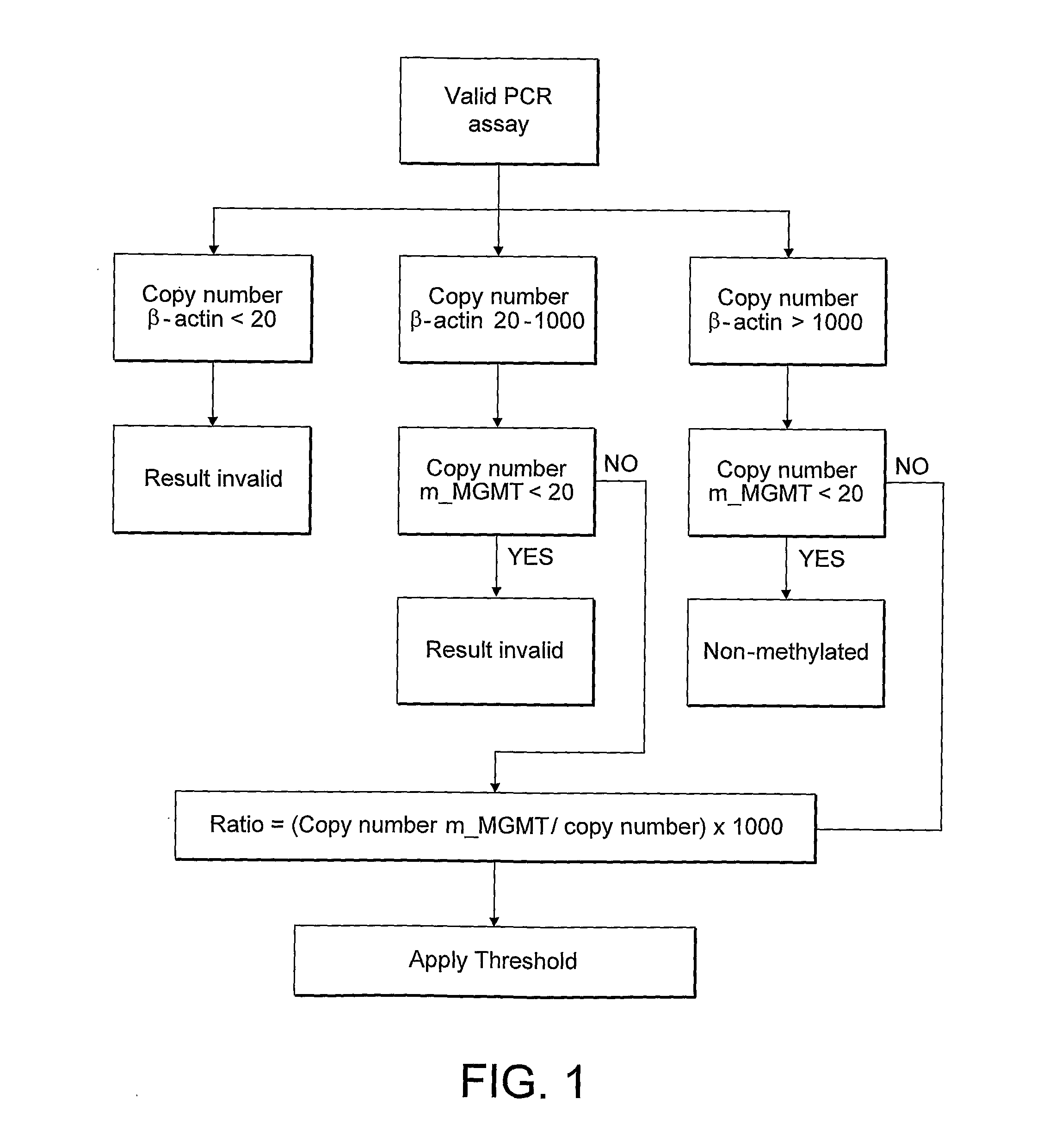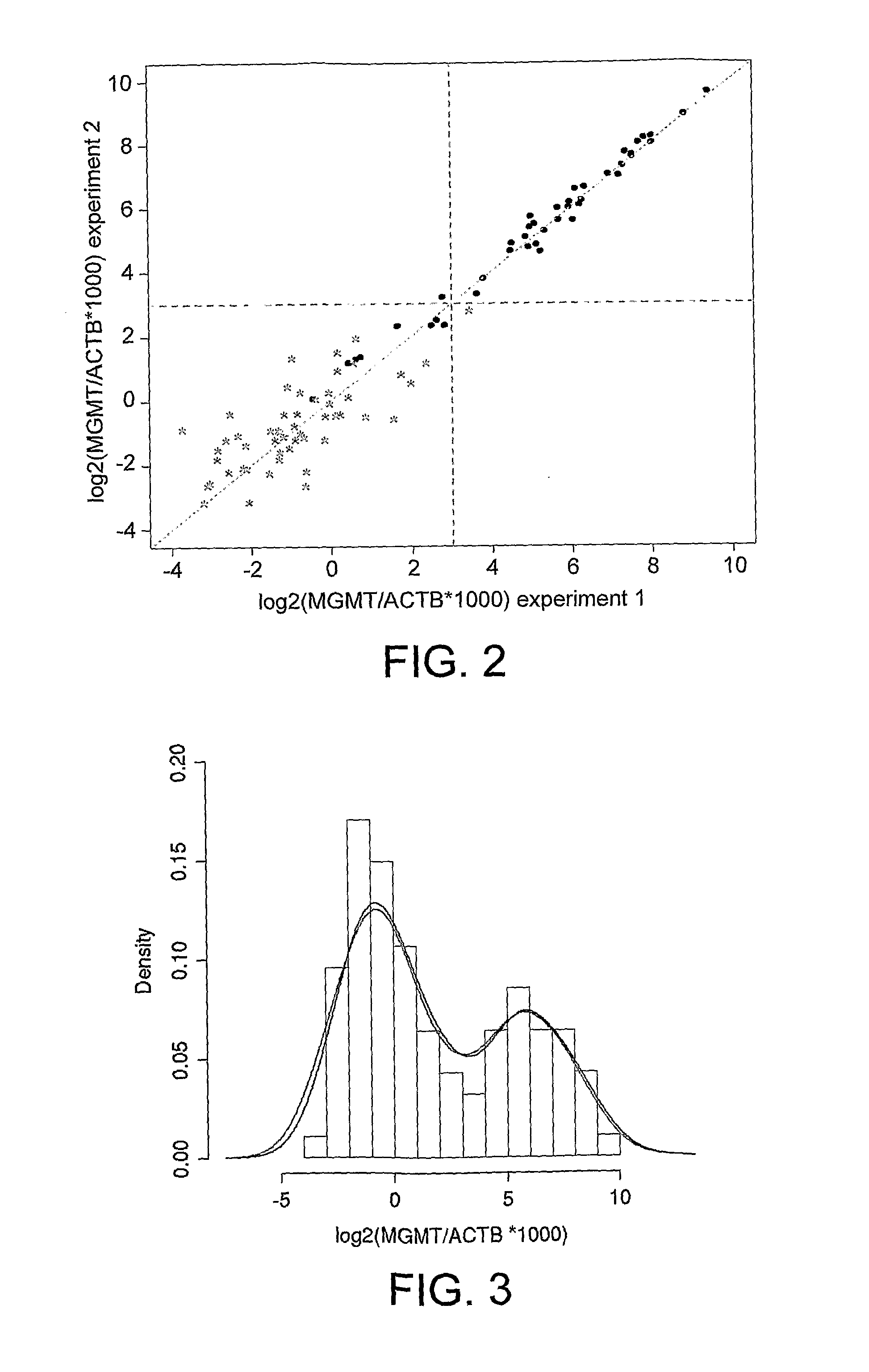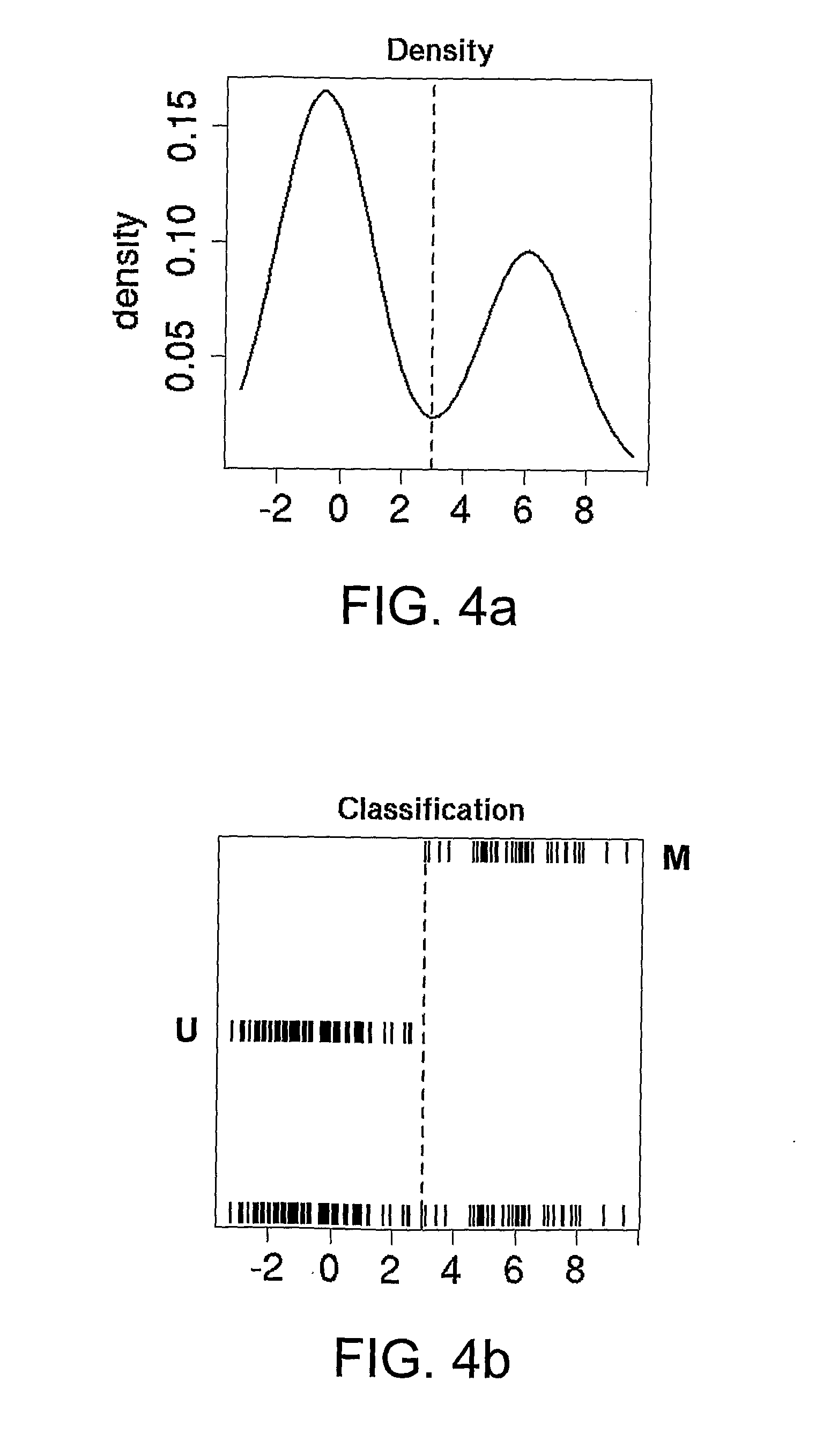Methylation detection
a technology of methylation and detection, applied in the field of methylation detection, can solve the problems of high sensitiveness and accuracy, and achieve the effect of improving the success ra
- Summary
- Abstract
- Description
- Claims
- Application Information
AI Technical Summary
Benefits of technology
Problems solved by technology
Method used
Image
Examples
example 2
Amplifluor Experiments: Testing Different Primer Sequences and Reading Temperatures
[0233]Amplifluor is a primer-based methodology. It lacks the third oligo nucleotide “probe” that typifies TaqMan and Molecular Beacon technologies. Without this third layer of specificity, amplifluor primers can fluoresce in response to non-specific amplification such as primer-dimers. Therefore it is important to carefully select primer sequences to overcome this behavior.
[0234]Initial Results
[0235]Initial MGMT amplifluor results were obtained using the primer set shown in Table 3. The final primer concentrations in the Amplifluor reaction mix were 100 nM for both forward primer / detector and reverse primer. 12.5 μl of iTaq™ Supermix with Rox (BioRad, 2× buffer) were used per PCR reaction. The total volume per reaction, including 5 μl of no-template control (NTC: water control with no DNA present), was 25 μl. The following thermal profile was used on the ABI 7900 HT SDS instrument: Stage1: 50° C. for ...
example 3
Additional Genes Tested Through Amplifluor
[0253]We developed a direct real-time fluorescence based methylation-specific PCR assay (real-time MSP assay) to define the methylation status of the MGMT promoter. Briefly, genomic DNA is deaminated using sodium bisulphite after isolation. 5-Methyl Cytosine is refractory to this chemical modification. Unmethylated Cytosine quantitatively turns into Uracil during this process. After amplification of the DNA sequences using methylation specific primers, the detection of the amplified DNA sequences is carried out using the amplifluor technology. The modification for the amplifluor primers is 5′ FAM internal Dabcyl.
[0254]The quantitation process depends on fluorescent light which is emitted only when the detector is bound to its complementary sequence.
[0255]Analyte quantitations for several markers additional to MGMT were successfully performed using this technology. These consisted of parallel amplification / quantification processes using speci...
example 4
Reproducibility of the MGMT Amplifluor Assay
[0302]To test the reproducibility of the MGMT amplifluor assay as described in example 1, 75 available clinical samples were processed twice through real-time MSP: once at OncoMethylome Sciences (ONCO) and once at Laboratory Corporation of America@ Holdings (LabCorp®). Both laboratories obtained comparable results.
[0303]Materials and Methods
[0304]Sample Preparation
[0305]75 formalin-fixed, paraffin-embedded (FFPE) glioma tissue samples were available for testing through the MGMT amplifluor real-time MSP. For each glioma tumor sample, 4 10 μm consecutive sections were prepared on glass slides. The prepared sample sections were then divided between the 2 sites and processed in parallel (including sample preparation) according to each laboratory's respective protocols (both real-time MSP). LabCorp® was blinded to the results obtained by ONCO.
[0306]Real-Time MSP Protocol Followed by ONCO
[0307]DNA isolation, modification and analyte quantitatio...
PUM
| Property | Measurement | Unit |
|---|---|---|
| total reaction volume | aaaaa | aaaaa |
| wavelength | aaaaa | aaaaa |
| wavelength | aaaaa | aaaaa |
Abstract
Description
Claims
Application Information
 Login to View More
Login to View More - R&D
- Intellectual Property
- Life Sciences
- Materials
- Tech Scout
- Unparalleled Data Quality
- Higher Quality Content
- 60% Fewer Hallucinations
Browse by: Latest US Patents, China's latest patents, Technical Efficacy Thesaurus, Application Domain, Technology Topic, Popular Technical Reports.
© 2025 PatSnap. All rights reserved.Legal|Privacy policy|Modern Slavery Act Transparency Statement|Sitemap|About US| Contact US: help@patsnap.com



